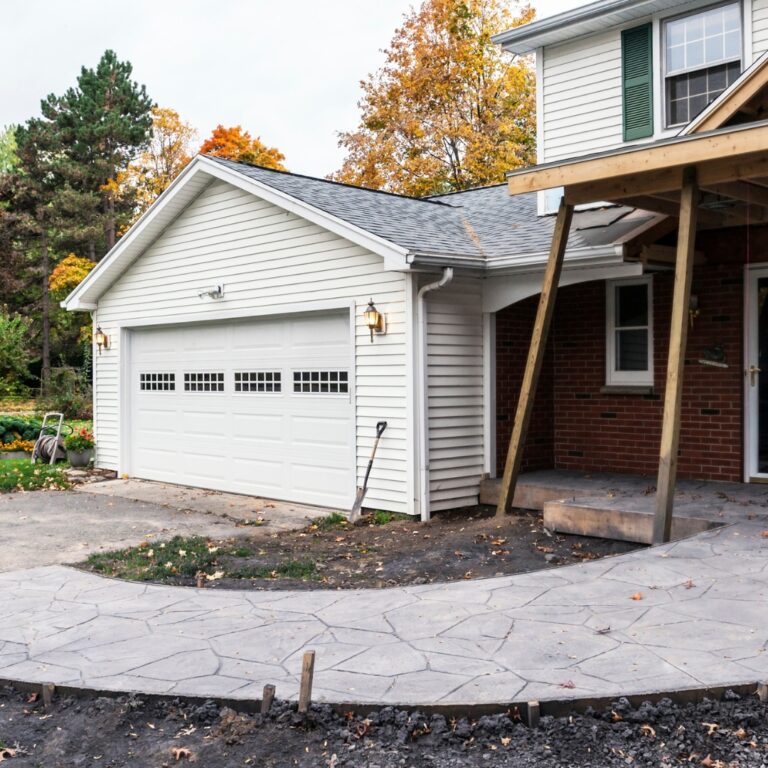That familiar sight – or worse, sound – of water in your basement after a rainstorm can be incredibly frustrating and even alarming. You’re not alone. Many homeowners grapple with this issue. But understanding why it’s happening is the first crucial step towards finding a lasting solution. This comprehensive guide will explore the common culprits behind a wet basement after rainfall, why it’s a significant concern, offer immediate short-term fixes, and detail long-term waterproofing strategies to keep your basement dry for good.
The Immediate Aftermath: Why the Rain Leads to Basement Water
The most obvious connection is the rain itself, but the journey water takes to infiltrate your basement can be complex. Here are some of the primary reasons you might find water downstairs after a downpour:
1. Poor Grading Around Your Foundation
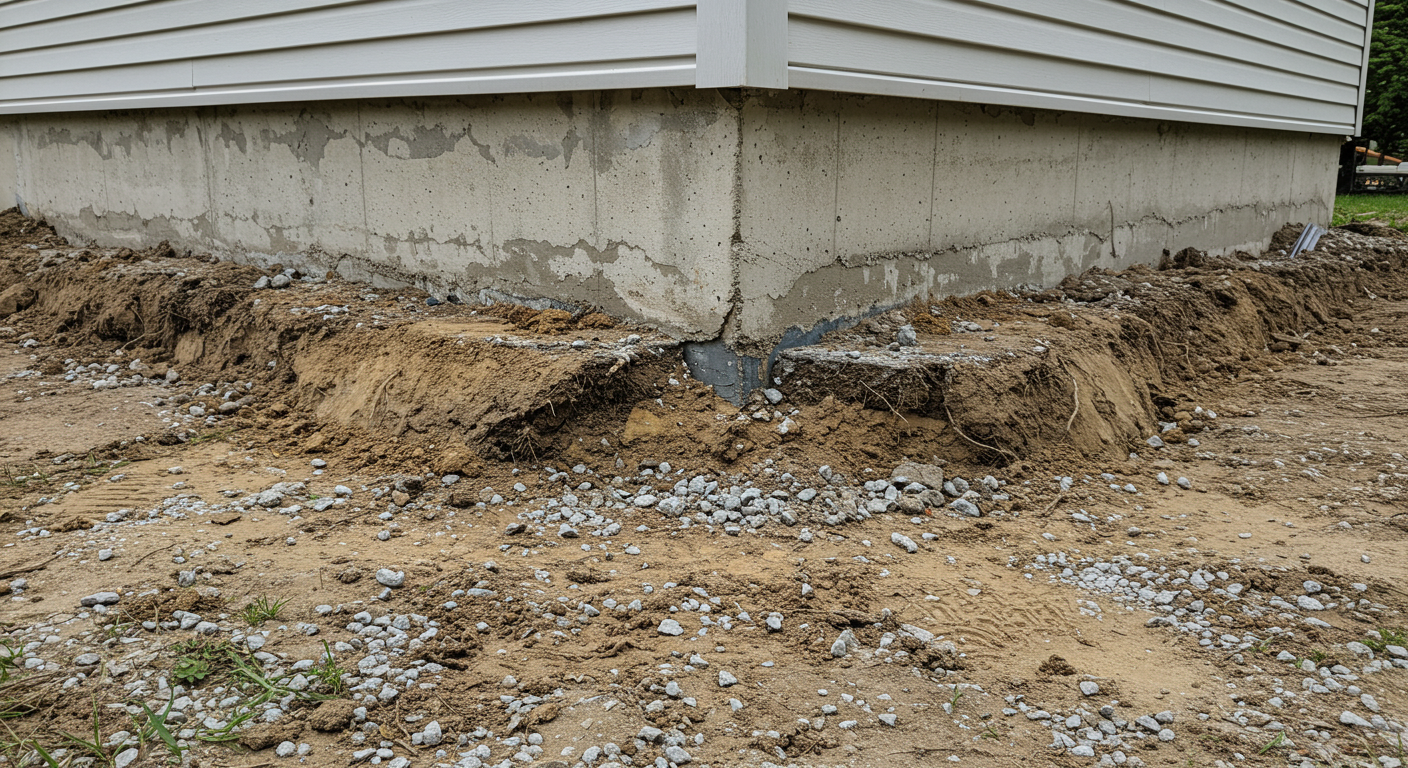
Think of the ground surrounding your home’s foundation as a landscape. Ideally, this landscape should slope away from your house. This positive grading encourages rainwater to flow away from the foundation walls. However, over time, the soil can settle, creating negative grading – a slope that directs water towards your foundation. This allows rainwater to pool near the foundation, increasing the hydrostatic pressure against the walls and making it easier for water to seep through cracks and porous concrete.
2. Inadequate or Clogged Gutters and Downspouts
Your gutter system plays a vital role in channeling rainwater away from your roof and foundation. When gutters are clogged with leaves, debris, or even bird nests, they can overflow. This overflowing water then cascades down the side of your house, saturating the soil directly next to your foundation. Similarly, if downspouts don’t extend far enough away from the foundation, the collected rainwater simply pools right where you don’t want it.
3. Foundation Cracks: The Path of Least Resistance
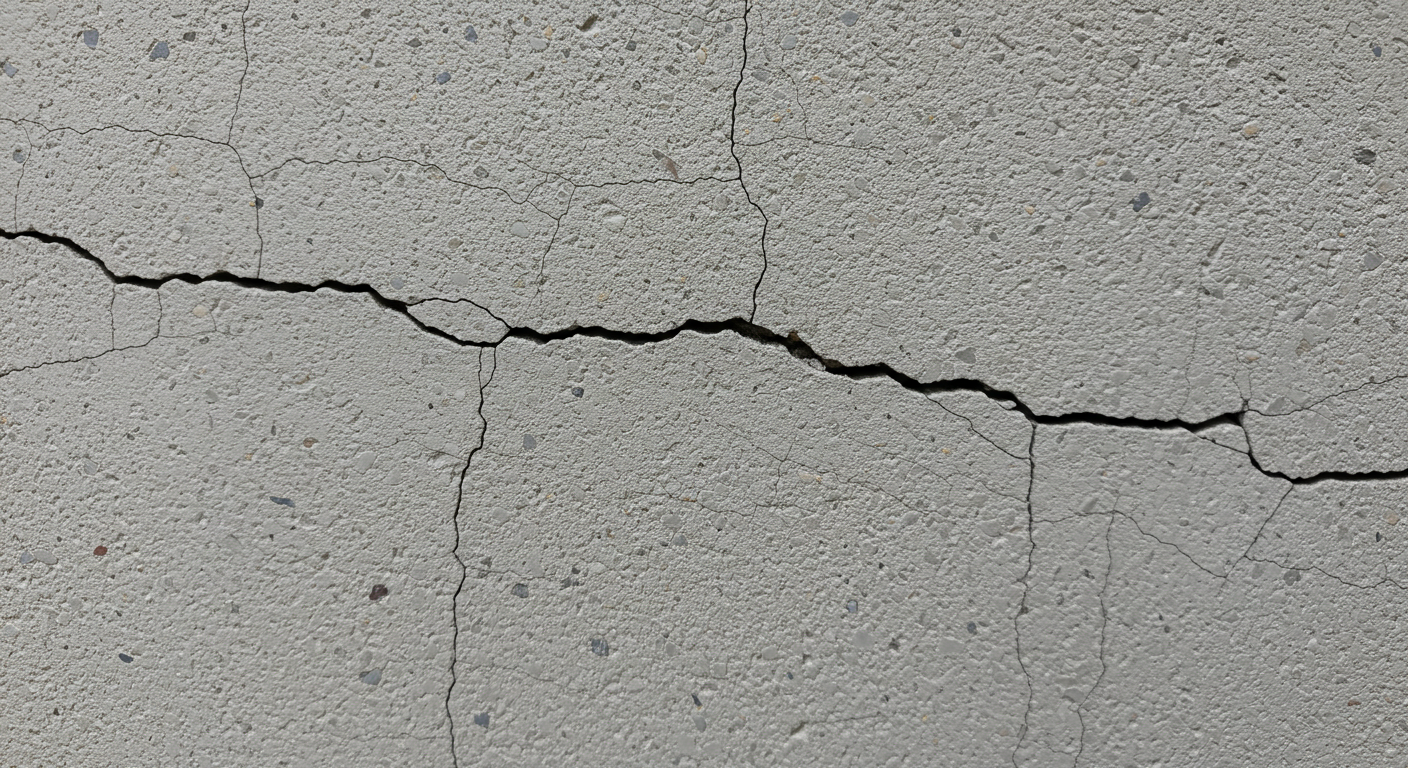
Even minor cracks in your foundation walls or floor provide an easy entry point for water. Concrete, while strong, can develop cracks due to soil shifting, settling, temperature fluctuations, or even the initial curing process. During heavy rainfall, the saturated soil exerts pressure on these cracks, forcing water through them and into your basement. These cracks can be hairline fractures or more significant openings.
4. Hydrostatic Pressure: The Force from Below
The soil surrounding your foundation can become saturated like a sponge during heavy rain. This saturated soil exerts significant pressure against your basement walls and floor – a force known as hydrostatic pressure. Water will always seek the path of least resistance. If your foundation isn’t adequately sealed or waterproofed, this pressure can force water through porous concrete, construction joints (where the walls meet the floor), and any existing cracks.
5. Lack of an Effective Exterior Waterproofing System
Modern construction often incorporates exterior waterproofing measures, such as waterproof membranes or coatings applied to the foundation walls during construction. If your home lacks these features or if they have deteriorated over time, there’s less of a barrier to prevent water from entering.
6. A High Water Table
In some areas, the natural level of groundwater (the water table) can be relatively high. During periods of heavy rainfall, the water table can rise, potentially reaching the level of your basement floor. This can lead to water seeping up through cracks in the floor or the joint where the floor meets the walls.
Why a Wet Basement is a Major Concern
Ignoring water in your basement is a risky proposition. It can lead to a cascade of problems that affect your home’s structural integrity, your health, and your overall quality of life.
1. Structural Damage
Constant exposure to moisture can weaken the concrete and mortar in your foundation over time. This can lead to the expansion and contraction of materials, exacerbating existing cracks and potentially causing more significant structural issues. In severe cases, it can compromise the stability of your entire home.
2. Mold and Mildew Growth: A Health Hazard
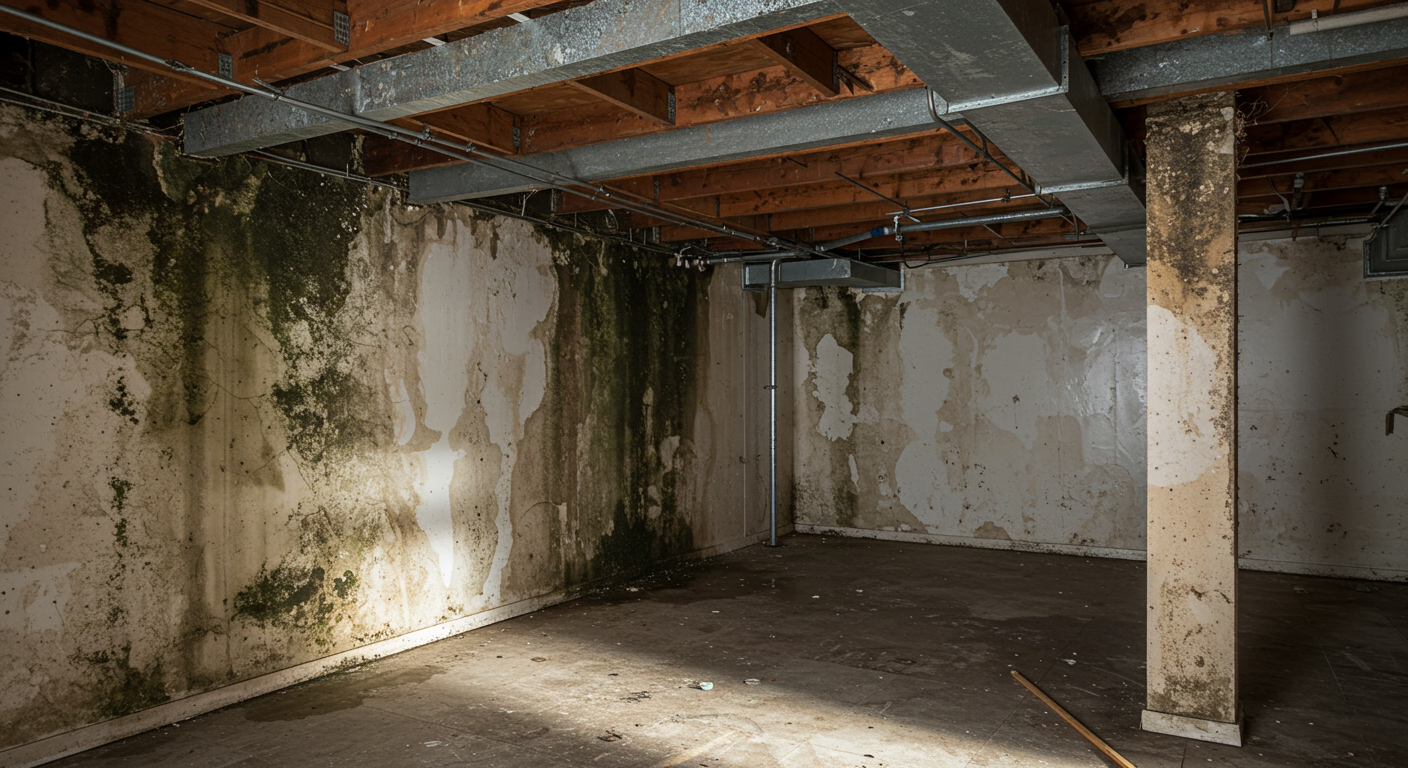
Damp and dark basements are breeding grounds for mold and mildew. These fungi thrive in humid environments and can release spores into the air, leading to respiratory problems, allergies, asthma attacks, and other health issues for you and your family. The musty odor associated with mold is also unpleasant and can permeate your entire home.
3. Damage to Belongings
If you use your basement for storage or as a living space, any water intrusion can damage or destroy your belongings, including furniture, electronics, clothing, and sentimental items. This can lead to significant financial losses.
4. Reduced Home Value
A damp or water-damaged basement is a major red flag for potential homebuyers. It can significantly reduce your home’s market value and make it harder to sell in the future. Addressing moisture issues proactively protects your investment.
5. Pest Infestations
Moist environments attract various pests, including insects like silverfish, centipedes, and even rodents. These pests thrive in damp conditions and can further contribute to an unhealthy and uncomfortable basement environment.
6. Foundation Problems
As mentioned earlier, water can exacerbate existing foundation problems. The freeze-thaw cycle in areas like Mechanicsburg can cause water trapped in cracks to expand and contract, widening the cracks and potentially leading to more serious foundation issues like bowing or shifting walls.
Immediate Relief: Short-Term Remedies for a Wet Basement
While long-term solutions are crucial, there are some immediate steps you can take to mitigate the damage and reduce the amount of water in your basement after a rainstorm:
1. Identify the Source (If Possible and Safe)
Try to determine where the water is coming from. Is it seeping through a specific crack, pooling near a certain wall, or coming up from the floor? Knowing the source can help you focus your immediate efforts. However, never enter a basement with standing water if there’s a risk of electrical shock.
2. Remove Standing Water
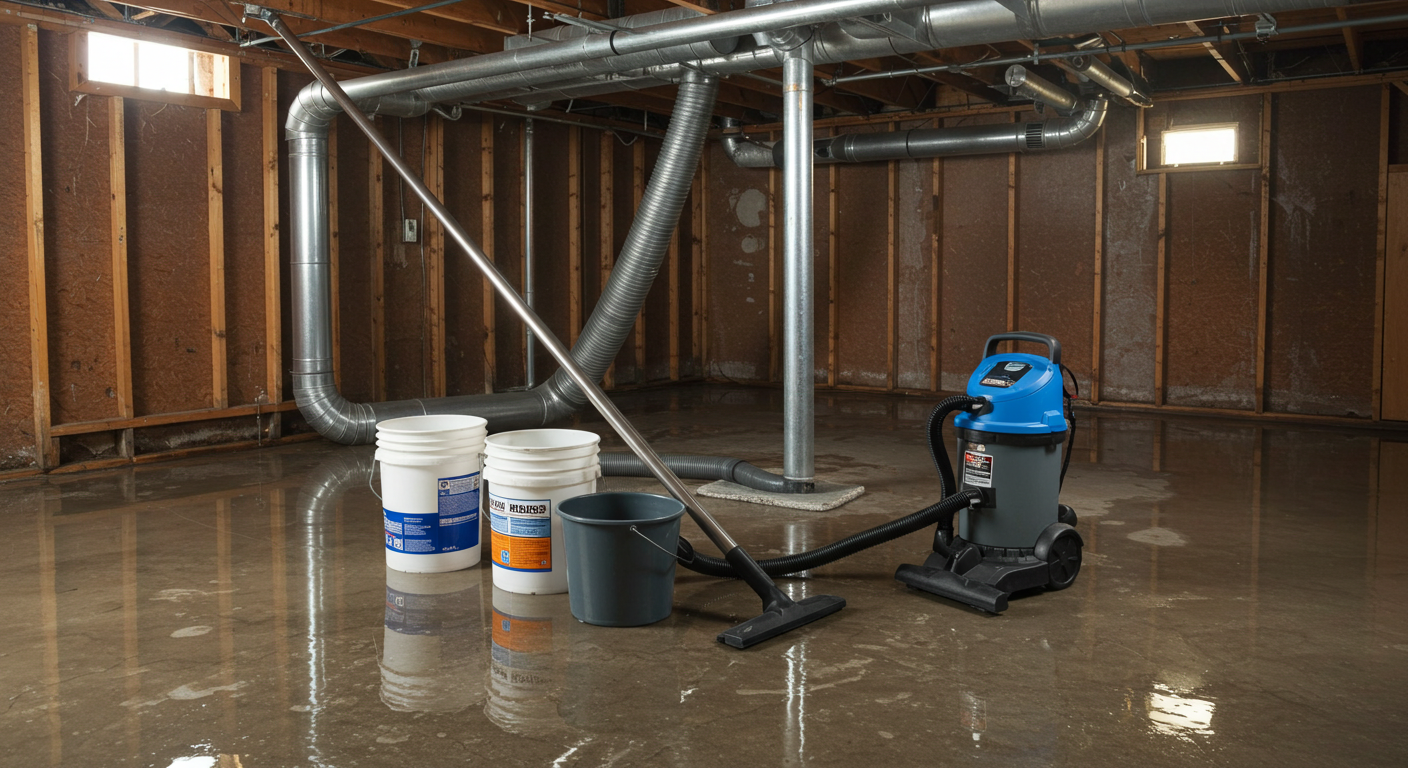
Use a wet/dry vacuum, mop and buckets, or even a submersible pump (if you have one and it’s safe to use) to remove any standing water as quickly as possible. This will help reduce humidity levels and minimize potential damage.
3. Improve Air Circulation

Open basement windows (if it’s not raining and the outside air isn’t excessively humid) and use fans to circulate air. This can help dry out the space and inhibit mold growth. A dehumidifier can also be beneficial in the short term to pull moisture out of the air.
4. Protect Your Belongings
Move any valuable items off the floor and away from damp walls. Place them on shelves or blocks to prevent further water damage.
5. Address Obvious Exterior Issues (If Safe)
If you can safely do so, clear any immediate blockages from gutters or temporarily redirect downspouts away from the foundation using extensions.
Important Note: These short-term remedies are just Band-Aids. They address the immediate symptoms but don’t solve the underlying problem. Long-term solutions are essential for a permanently dry basement.
Long-Term Solutions: Waterproofing Your Basement for Good
To prevent water from entering your basement after it rains, you need to implement comprehensive long-term waterproofing strategies. These typically involve addressing both the exterior and interior of your foundation.
Exterior Waterproofing Solutions
1. Foundation Grading Correction
Regrading the soil around your foundation to ensure a positive slope (at least a 6-inch drop over the first 10 feet) is a fundamental step. This directs surface water away from your home. This may involve adding soil and compacting it properly.
2. Gutter and Downspout Management
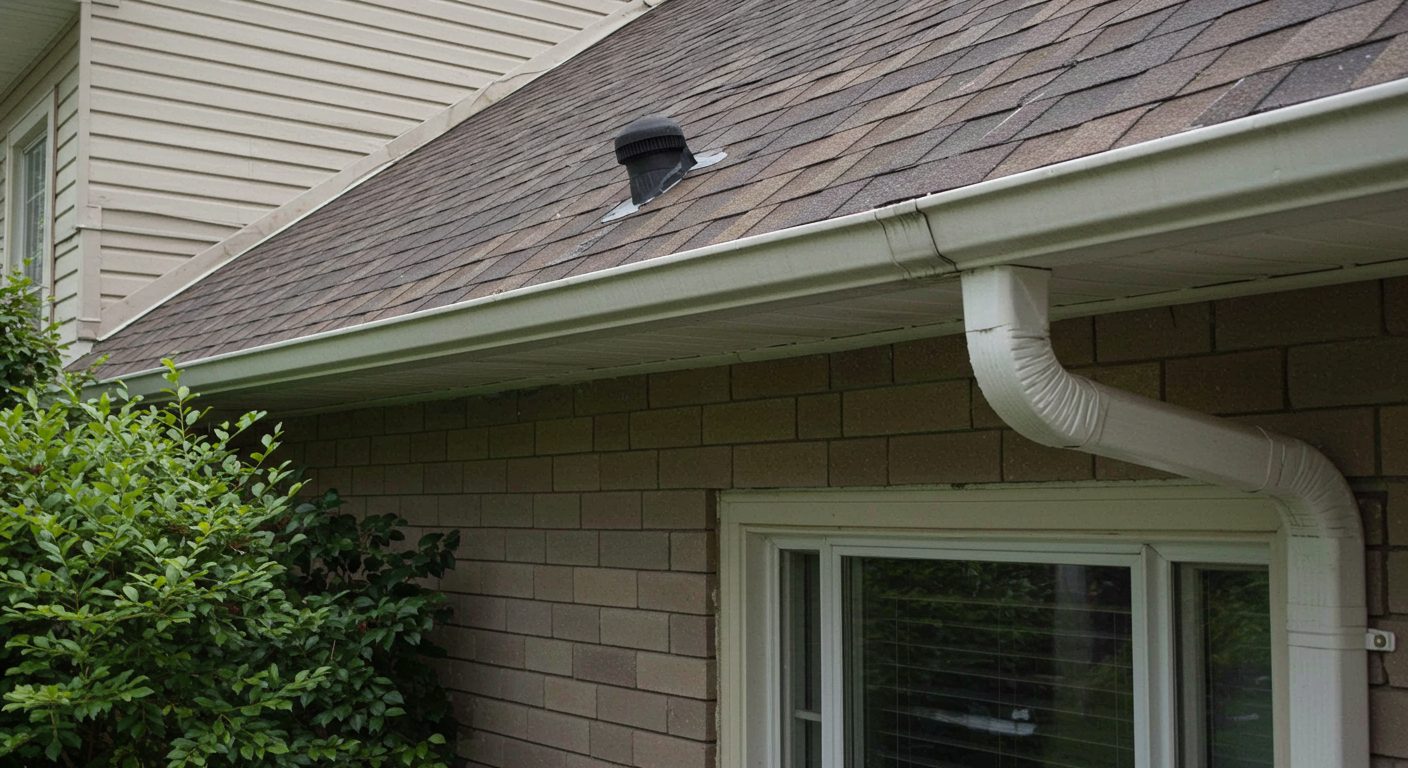
Ensure your gutters are clean and free of debris at least twice a year. Install downspout extensions that carry water at least 6-10 feet away from your foundation. Consider underground drainage systems connected to your downspouts to further channel water away.
3. Exterior Waterproofing Membranes
Applying a waterproof membrane or coating to the exterior of your foundation walls during construction or as a retrofitting project creates a barrier against water penetration. These membranes can be liquid-applied or sheet-applied and offer excellent protection.
4. French Drain System (Exterior)
An exterior French drain involves excavating around the perimeter of your foundation and installing a perforated pipe in a gravel-filled trench. This pipe collects groundwater and directs it away from your foundation to a designated discharge point, such as a dry well or a lower part of your property.
Interior Waterproofing Solutions
1. Interior French Drain System (Perimeter Drain)

Similar to an exterior French drain, an interior system involves installing a perforated pipe along the inside perimeter of your basement floor, near the wall-floor joint. This pipe collects water that seeps through the walls or up through the floor and directs it to a sump pump.
2. Sump Pump System
A sump pump is a crucial component of any interior waterproofing system. It sits in a sump pit installed in your basement floor and automatically pumps out any water that collects in the pit, discharging it away from your foundation. A reliable sump pump with a battery backup is essential to protect your basement even during power outages.
3. Interior Waterproof Sealants and Coatings
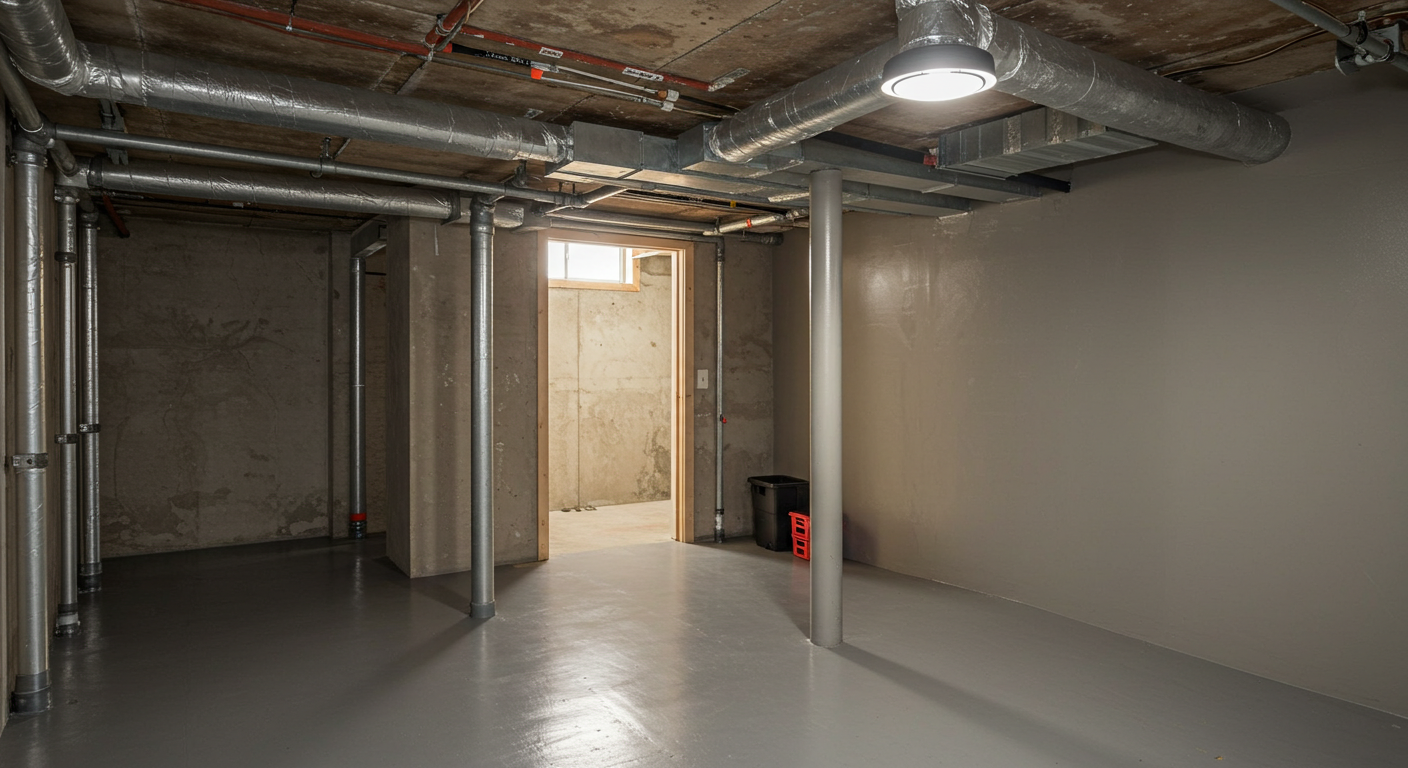
Applying waterproof sealants and coatings to interior basement walls and floors can help to block minor water seepage and reduce humidity. However, these are typically used in conjunction with other waterproofing methods and are not a standalone solution for significant water intrusion.
4. Vapor Barrier Installation

Installing a heavy-duty plastic vapor barrier on your basement walls can help to prevent moisture from evaporating into the air, reducing humidity and protecting finished walls and insulation.
When to Call the Professionals
While some minor grading or gutter cleaning can be DIY tasks, significant basement waterproofing projects are best left to experienced professionals. Look for contractors specializing in basement waterproofing who can:
- Accurately diagnose the source and extent of your water problems.
- Develop a customized waterproofing plan tailored to your home’s specific needs and site conditions.
- Properly install waterproofing systems, ensuring their effectiveness and longevity.
- Provide warranties on their work, giving you peace of mind.
Taking Control of Basement Moisture
Finding water in your basement after it rains is a common problem, but it’s not one you have to live with. By understanding the reasons behind this issue, recognizing the potential dangers, and implementing appropriate short-term and, more importantly, long-term solutions, you can effectively waterproof your basement and create a dry, healthy, and usable space. Don’t let the next rainstorm fill you with dread. Take proactive steps today to protect your home and your peace of mind.




